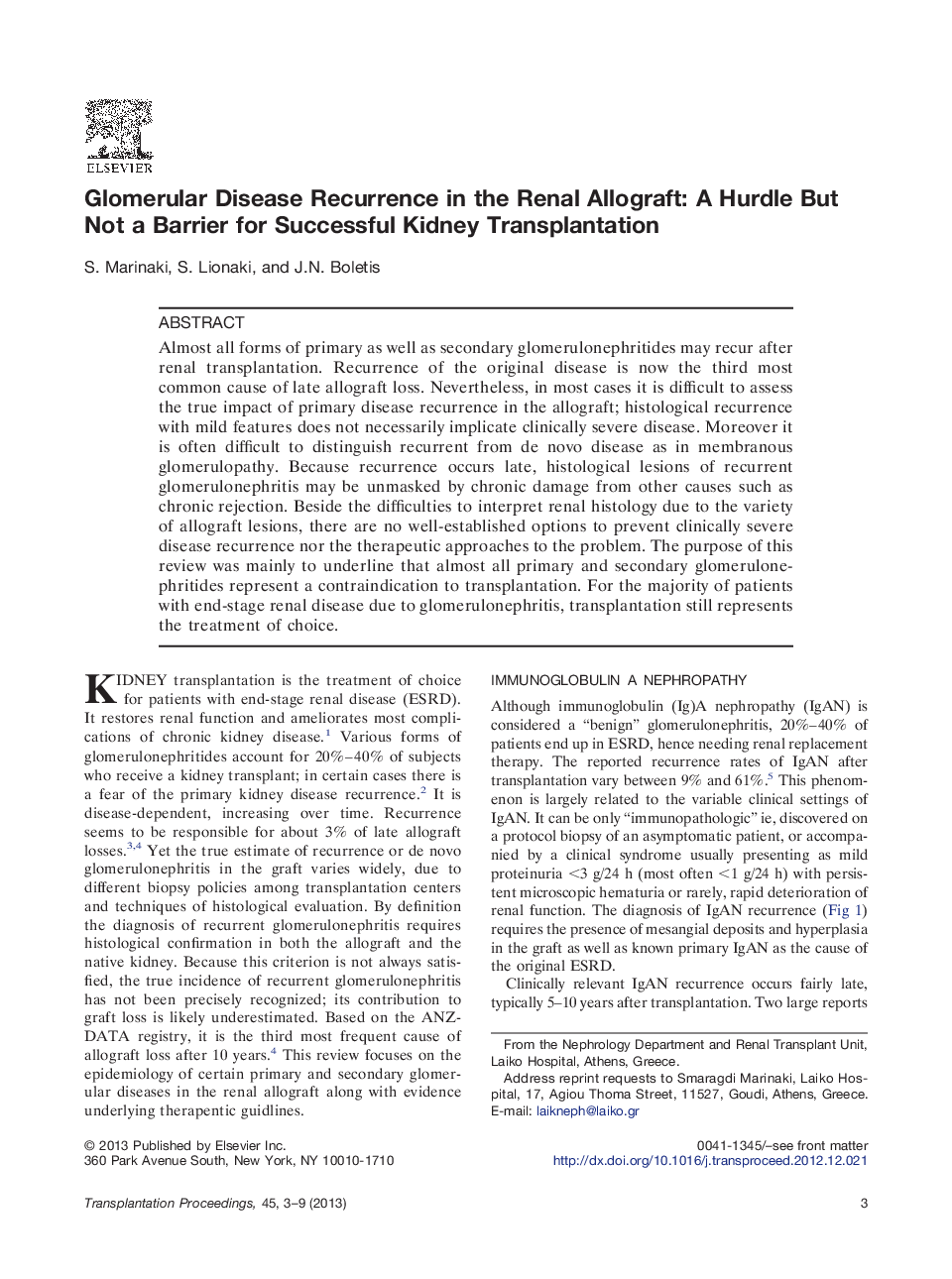| Article ID | Journal | Published Year | Pages | File Type |
|---|---|---|---|---|
| 4257054 | Transplantation Proceedings | 2013 | 7 Pages |
Almost all forms of primary as well as secondary glomerulonephritides may recur after renal transplantation. Recurrence of the original disease is now the third most common cause of late allograft loss. Nevertheless, in most cases it is difficult to assess the true impact of primary disease recurrence in the allograft; histological recurrence with mild features does not necessarily implicate clinically severe disease. Moreover it is often difficult to distinguish recurrent from de novo disease as in membranous glomerulopathy. Because recurrence occurs late, histological lesions of recurrent glomerulonephritis may be unmasked by chronic damage from other causes such as chronic rejection. Beside the difficulties to interpret renal histology due to the variety of allograft lesions, there are no well-established options to prevent clinically severe disease recurrence nor the therapeutic approaches to the problem. The purpose of this review was mainly to underline that almost all primary and secondary glomerulonephritides represent a contraindication to transplantation. For the majority of patients with end-stage renal disease due to glomerulonephritis, transplantation still represents the treatment of choice.
